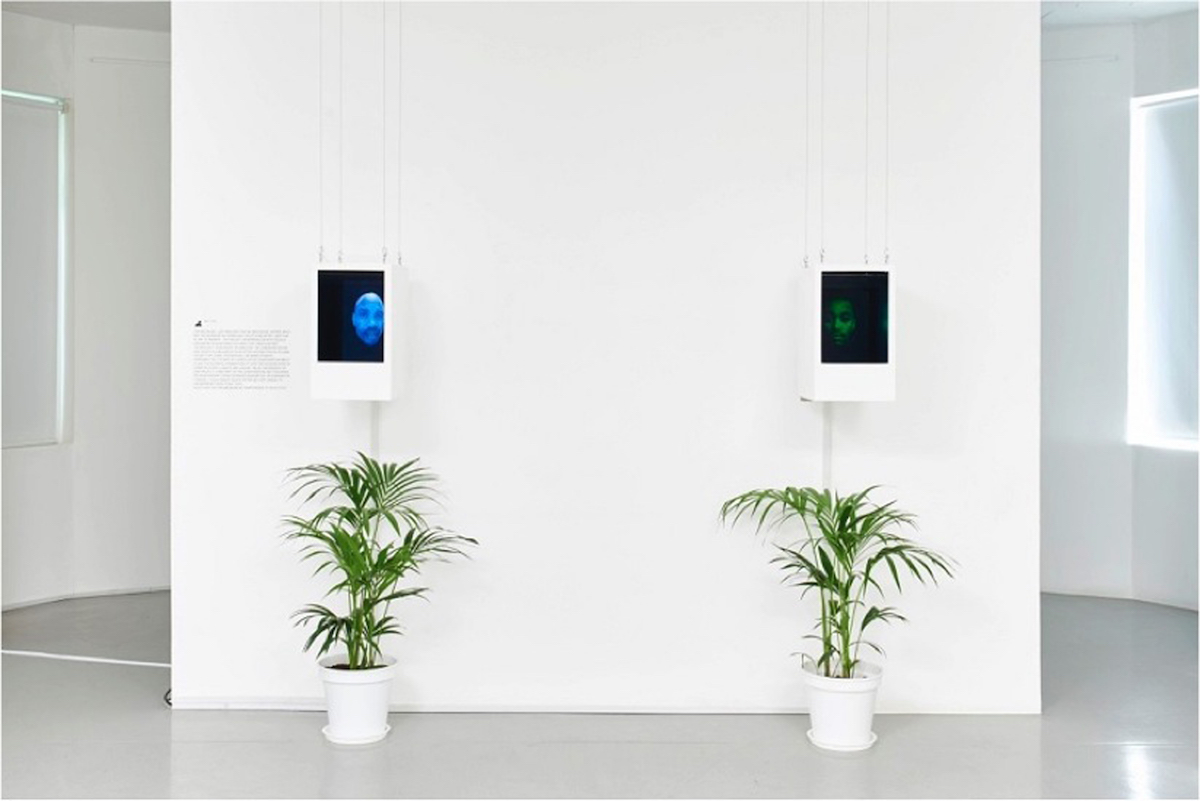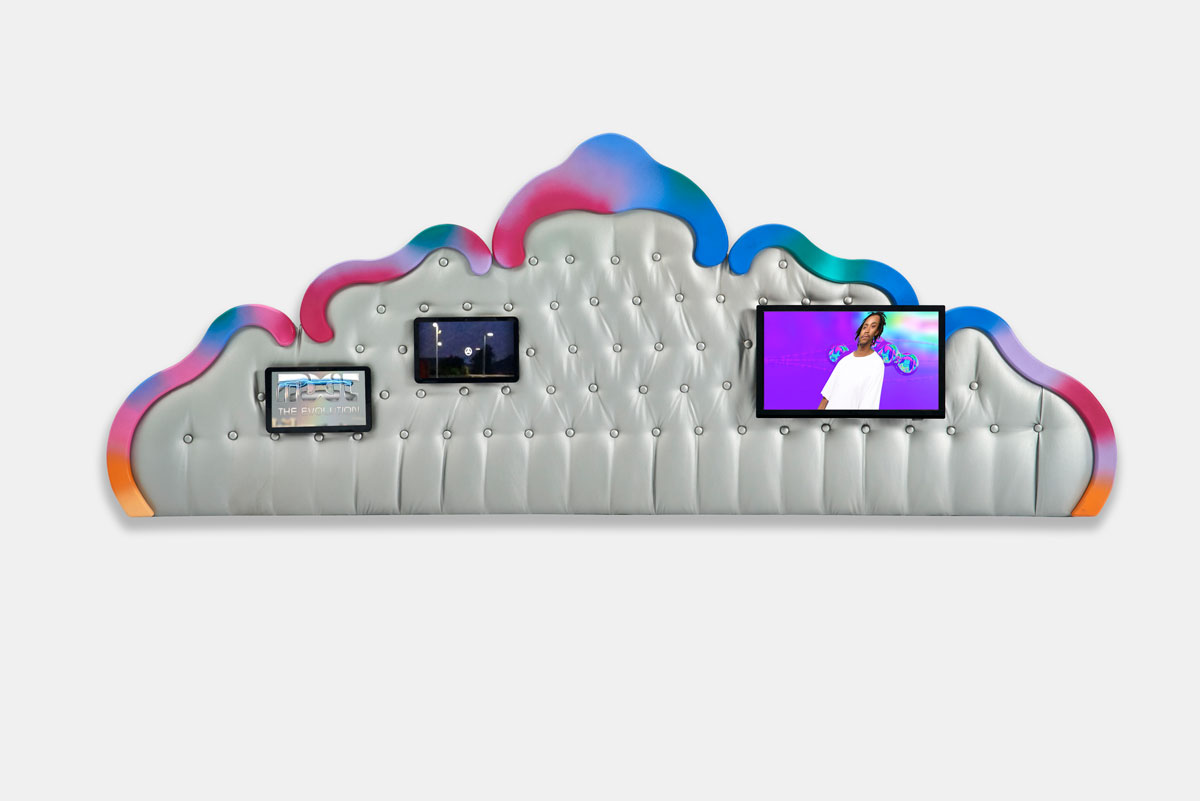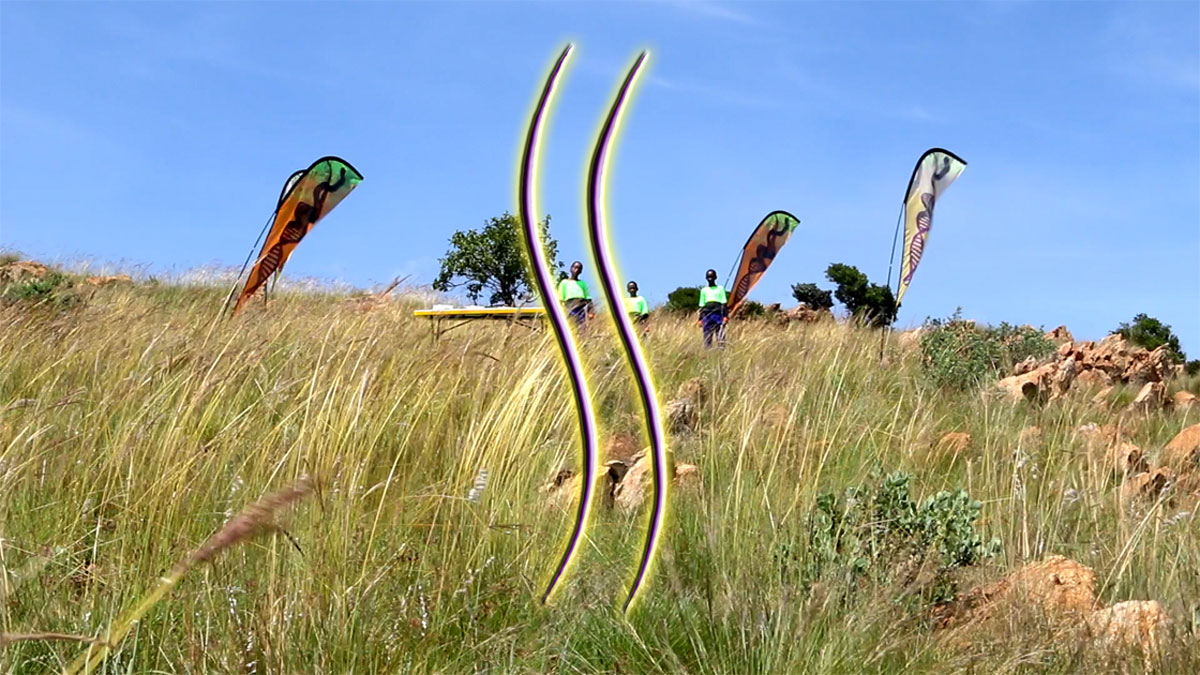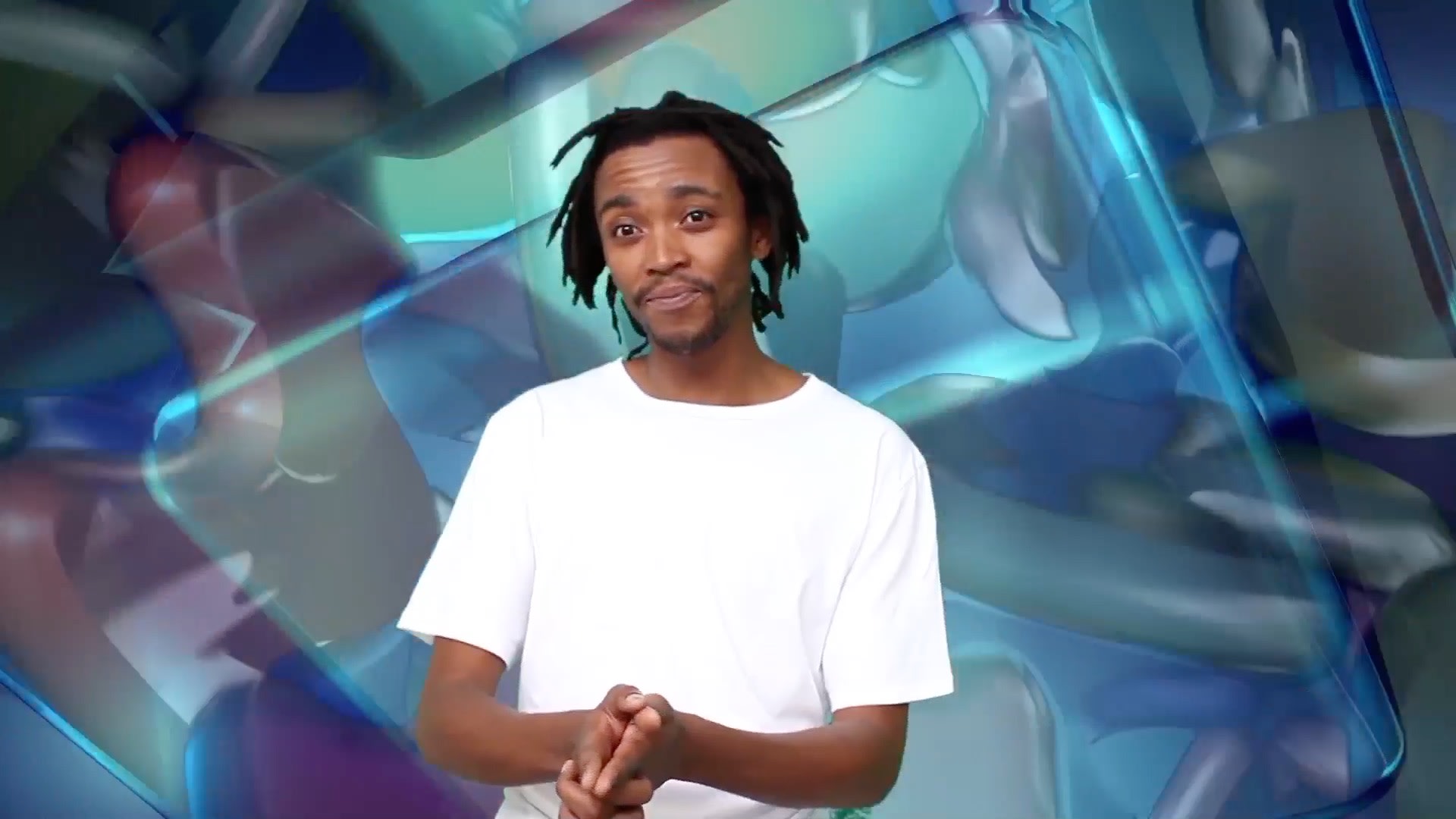This article accompanies the inclusion of Consciousness Engine 2: absentfatherbot by Bogosi Sekhukhuni in the online exhibition Net Art Anthology and the gallery exhibition “The Art Happens Here: Net Art’s Archival Poetics,” on view at the New Museum through May 26.
Hanna Girma: Can you tell me about Consciousness Engine 2: absentfatherbot? The piece is about four years old now and I’m wondering if, in revisiting the work, you’re thinking about it differently?
Bogosi Sekhukhuni: Yeah, definitely. It started with this residency that I was doing in Paris in 2014 as part of a 89 + project by Hans Ulrich Obrist and Simon Castets. absentfatherbot to be honest, was a very last-minute thing. It’s one of those projects that came together right at the end. The idea was to use my personal history to kill more than two birds with one stone such that I could speak on a number of ideas that I was interested in. In the field of AI: what was the implication of our understanding of human consciousness? Where does that originate from? It was also just to do a bit of self-healing at the same time by using myself as a test subject.
What else can I say? It’s quite a funny situation because it seems to be the thing that I’ve done that gets the most attention.

HG: Why do you think this piece is something that a lot of people tend to come back to?
BS: I think it’s funny; as people, we like drama. One of the things that I immediately realized, especially early on when I first exhibited it, was just that, “Oh, people really like drama.” I was telling a friend of mine actually the other day that I sometimes feel like I’m in that episode of Black Mirror, the “Black Museum” episode.
Except I’m mining my own trauma for the world to consume. It’s just, I guess, sort of doing its own thing.
HG: I think in a lot of ways this work illuminates how we have begun to process trauma in the digital age.
BS: There was a time when oversharing online was a powerful act, but now I just feel less and less like that ’s the case.
HG: Do you feel that you’ve been pulling away from sharing on social media?
BS: Yeah, definitely. My relationship to social media’s changed a lot in the past years. I’m just not interested in this accelerated, personal branding moment.
HG: I’m also thinking about how surveillance and data mining are sort of ways of stealing genetic material. I’m wondering whether your initial interest in biological commodification and DNA led you to work with AI.
BS: I think in hindsight yes! But it also came from an interest in asking questions about consciousness or conscious experience. Around that time, I was really into the whole singularity spiel. And these are important issues that we’re going to have to figure out... We don’t even really understand what conscious experience is.
The Consciousness Engine project was a series of sculptural expressions that tinker with ideas of human consciousness and where it originates from. The first idea was originally to obtain a copy of my DNA sequence and then print that out as an expression of consciousness creation.
This other direction considered consciousness as something that you accumulate from the outside. Consciousness then becomes more like a verb or an action.
The work itself drew a bit on a Cornell Creative Machines Lab experiment where they hooked up two chatbots and had them converse with each other. It was basically that idea, but then I decided to actually use real conversations and display that as a simulation. The idea is that interaction is an act of consciousness creation or a consciousness engine in a poetic, but also very real way.
HG: I know in your recent work you’re really dealing a lot with the intermingling of domestic space and cyberspace. What is the significance of black, aspirational aesthetics in homes and the aspirational geography of the web is in your work.
BS: That’s so tricky. That’s actually one thing I keep grappling with. I have an African American friend who confronted me with regards to why I appear to draw a lot from African American visual languages. It wasn’t really something that I understood that way; I never really separated these different types of expressions. I mean, for sure there are regional things, and accents and all of that, but I guess it really is a question about what you consider black at the end of the day.
HG: Can you elaborate more on your relationship to these visual languagess, even South African aesthetics that have come through in your work.
BS: I came to an understanding that a lot of visuals, architecture, graphic advertising a lot of those things are inspired by a need to present one’s self in a light that speaks to having “made it” or having won at capitalism.
That’s just something that I see in black communities in most of the so-called developing world and developed world. This need to put your best game face on at all times. I don’t know. A part of it is a different manifestation of the culture of dressing up really well on a Sunday in black community which has a very different meaning from white religious communities. It comes from a very different place I think, a place of just having to create an agency for one’s self.
At the same time I want to start thinking about what happens after one does the work of reconnecting with a severed history—what kinds of spontaneous evolution of self identification will take place, and what visual cultures that will come with that.
HG: Would you say that’s what you are getting at when you’re placing these screens within bed frames and things like that?
BS: I’m interested in claiming the Africanity of Baroque furniture and interior styles that feature a lot in my practice. The characteristically ornate designs and finishes strike me as fractal and follow a design philosophy that isn’t incompatible with my experience of Afroic design sensibilities in southern and other parts of Africa.

Soul Contract Revocations; Dream Diary Season 2, Matilda, 2017. Stevenson Gallery.
I’ve switched some of my thinking from the “Dutch Wax is not truly African” perspective, which I’m afraid is part of an attitude that helps trap and reinforce the general perception of Africa as belonging to antiquity, by erasing contemporary african cultures that thrive, reflect and contribute to a globalised world.
I was also wanting to play with the limits of video. I was think about a way of framing video that was all-encompassing and compact. The totems are like mobile sacred sites or stations and are free from needing to be exhibited within a white cube. I envisioned them sitting in an open public space in some KWAAL WORLD city district.
HG: I know you’ve said in the past that you don’t really agree with ideas of Afro-futurism. However, I think that your work seems to—in ways that Afrofuturism describes—exist in the past, the future, the present, and also in alternate realities. Looking at pieces like KWAAL WORLD, how does your work draw from ancestral knowledge? How we can look towards ancestral knowledge to drive future technologies and the future at large? Finally, how do alternate, even revisionist, historical narratives drive your work?

Still from Simunye Systems Orientation, 2017
BS: Those are really important things for me actually, if not the most important parts of my practice. The idea of this need that we have to completely rewrite history because in a way it’s one of the last frontiers of the colonial and postcolonial project . In many ways, I think white power weaponises history in order to keep certain people in their place. If we can get beyond the accepted 5,000-year history of organised human societies and become more open to possibilities of what might’ve really happened in the past, game’s over from there. People’s self-identifications will really change.
I think most black students studying art or entering institutions come to a point where we become super disillusioned with curriculum. My way of thinking about history really came from being shocked that we weren’t learning anything about Afrocentric histories, histories of thinking, these things are just nonexistent in South African curricula. It’s still really an unbelievable factor for me. It’s like “Wow, this is really what we’re doing to ourselves.” We’re just going to learn all this shit about other people and know nothing about ourselves? How do you expect to get anything to go right? That began this process of discovery. There is an acknowledgement of a universe that is intersectionally multidimensional by nature, which is promoted in Bantu philosophy and traditional religion that validate some of my suspicions and interests in esoteric knowledge.
It’s also inspired how I choose to develop ideas. I find myself comfortably in a place of just accepting certain visions that come to my mind–- and acting on that, which is completely opposite to how I was studying. Everything comes first and then later I can come back and figure it out because I acknowledge that the concepts really aren’t mine actually. These are things that have been communicated to me by my guides and the information in my blood.
HG: You often push against this idea of spirituality and technology being a dichotomy, which I really love about your work. In your dream diaries, you integrate this nonsense language—like a very convoluted version of a user agreement, but with this more poetic, ancestral language—to highlight how the things that we are doing on the internet have very tangible, real world implications. Do you see your work as a guide to remedying the anxieties brought about by the internet, or do you see it more as highlighting the intersection between spirituality and the internet as a way for communal healing?
BS: It is putting it out there that I’ve been going through certain things and this is how I’m dealing with them. That’s really the case with my collective NTU work and these diary revocations for example.
The revocation videos are like spells or prayers. The idea is that every time that they run a part of me is repeating that spell.
The content of the prayers specifically responds to a period of psychic instability or vulnerabilities i was experiencing, and was sourced online when I was figuring out what was going on.
HG: Do you think in a way that you putting these out into cyberspace, it will manifest in a way?
BS: Yeah, cyberspace as well as real space. We also have to always remind ourselves, “What is cyberspace?” Cyberspace is real space. It’s light and it’s metal and it’s magnetism.
HG: I really love the work you do with NTU and I know that you’ve also worked with the CUSS Group and been active in 89plus and things like that. I’m wondering how your process or the way you think through ideas and work changes within working with each of these different groups and how your work has been affected by working with each of these as well.

Bogosi Sekhukhuni, Dream Diary Season 2, 2017. Still from single channel HD video with sound.
BS: I think when I started, I really had a super naïve approach to collaborative practice . Like “Yeah, no, we’re all just going to work together, blah, blah, blah, this and that, solidarity.” Right now, I’m in a place where, I’m trying to define my path and use my group experiences as resources I can draw from; when thinking about the conclusions and various problems we’ve tackled and continue to tackle. It’s not hard to disregard the self when working collaboratively, something in our working culture even encourages it. I’ve found it to be a problem and would like to think of ways to counter that feeling. My friend Ravi from CUSS Group has been talking about looking at the group as more of a network and I think that’s an interesting distinction. And while it tends to be difficult to quantify what ideas overlap but there are some ways I separate my individual practice from my collective work. For instance, with NTU, we have this project that’s looking at ideas in free energy, which is why we worked with Chikhumbutso (Thus Saith the Lord). It’s a theme that sits very close to me personally. And since then I have been developing projects that offshoot from that bigger work, interrogating more what we mean when we talk about free energy. Are we talking about electromagnetic energy? And how does that relates to what people describe as subtle energy in holistic integrative medicine circles?
What I’m finding a bit is just this difference in the language of explaining forces of nature, and how on the continent there’s a very particular way of imparting information or teaching. I’ve been following this engineer who had a few videos on YouTube; he has this hypothesis where he relates ancient Kemetic cosmology to atomic theory, where particles and sub-particles personify a particular deity.
HG: Would you say that in your work you are also playing with this idea of credibility, and who has the ability to validate sources or validate ideas?
BS: Yeah, 100%, 100%. I feel that’s also really another tool that white power uses to keep certain ideas at bay or prevent certain connections from being made. Also, it’s just being honest about what it is I actually find fascinating and worthwhile. For a while, I was really cautious about creating work around ideas and spirituality or what people see as new age philosophies. The challenge has been for me to just pull these elements together—and there’s a lot of people who have done that as well in the past, who I’m drawing from.
Featured image: installation view, “Simunye Summit 2010” at Stevenson Gallery, 2017.
